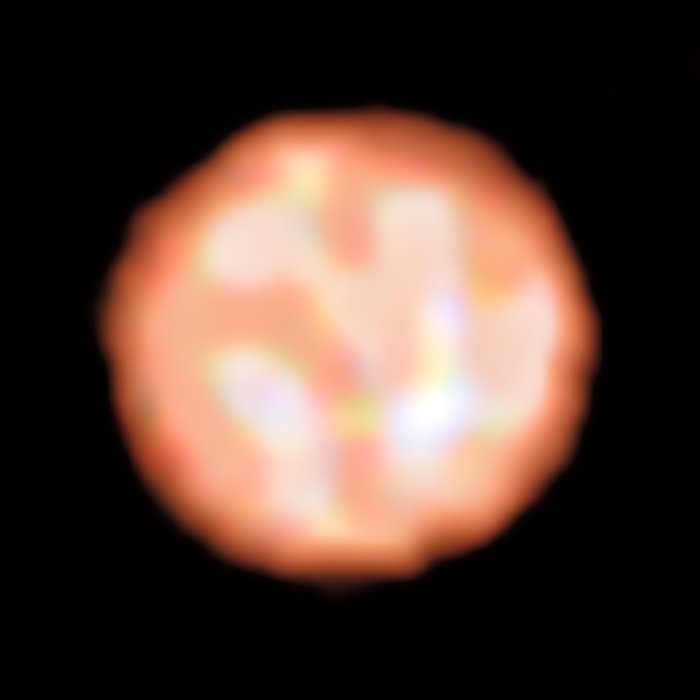Stunning photo: Alien red star 350 times bigger than the Sun has massive bubbly cells
The ageing red giant star, π1 Gruis, is located 530 light years away from the Earth.
For the first time ever, astronomers have captured an incredibly detailed image of the surface of an alien, red giant star — π1 Gruis — which is located outside our Solar System, around 530 light years away from the Earth. The new photo reveals that the surface of the massive alien star is made up of just a few giant bubbly cells.
The ageing red star has almost the same mass as our Sun but is 350 times bigger and several thousand times brighter than the Sun. An international team of astronomers led by Claudia Paladini of the European Southern Observatory (ESO) used the PIONEER instrument on the ESO's Very Large Telescope to capture the highly-detailed image of π1 Gruis.
The astronomers found that the surface of the giant star is made up of just a few "convective cells, or granules," each of which covers over a quarter of the star's diameter, measuring around 120 million kilometres across.
"Until now, the surface of one of these stars has never before been imaged in detail. Just one of these granules would extend from the Sun to beyond Venus," the ESO said in a statement.
The ESO explained that π1 Gruis shrank after running out of energy, causing the red star to heat up to over 100 million degrees. The incredibly high temperatures saw the star's evolution from the first phase of its nuclear fusion, moving ahead to the next phase, where it began fusing helium into heavier atoms such as carbon and oxygen. Fuelled by the intense heat, the star eventually grew hundreds of times larger than its original size.



The lives of stars with eight times the mass of the Sun generally end in massive supernova explosions, but less massive stars like π1 Gruis generally gradually shed their outer layers to transform into beautiful planetary nebulae.
"Previous studies of π1 Gruis found a shell of material 0.9 light-years away from the central star, thought to have been ejected around 20,000 years ago. This relatively short period in a star's life lasts just a few tens of thousands of years – compared to the overall lifetime of several billion – and these observations reveal a new method for probing this fleeting red giant phase," ESO said.
The findings of the research will be published in the journal Nature on 21 December 2017.






